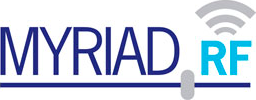Hi everyone,
I’ve finally managed to get something out from the LimeSDR XTRX board but for that I had to set rx.path of second channel to the same value as the first channel. Using basicRX.cpp what I need to do is to config.channel[1].rx.path = 2;. Without doing so the samples received by the StreamRx is simply a noice floor at around -80dBFS.
The test configuration goes as following:
- LimeSuiteNG hash c57dcd13a78
- Gateware from the hash bdd0c69078e
basicRX.cppmodified to havestatic const double frequencyLO = 100e6;- Signal generator at at 98MHz, 2 mVrms connected to RxA
Without any modifications the reported peak is somewhere around Peak amplitude: -81.26dBFS @ 100.001 (which is just noise floor).
If I add config.channel[1].rx.path = 2; then re reported peak is around Peak amplitude: -27.20dBFS @ 98.000 (which seems to correspond to the actual signal, and the reported dBFS does change with the changes in the input signal power and frequency).
At the same time, the signal across MN33 (across the RX1_L_A_P and RX1_L_A_N) does not change depending on the value of the config.channel[1].rx.path. So intuitively it does not seem to be caused by wrong antenna switching part of the circuitry.
Not sure if that’s a quirk of current API, or something else is going on. So far I’m out of ideas.
P.S. It might be something to do with the RF test failure I’ve mentioned in another thread. With the attenuator and wiring I have I’d expect the TX_2->LNA_L tests to pass.
